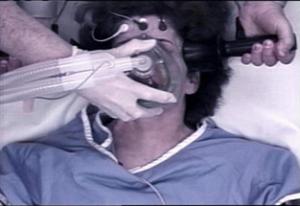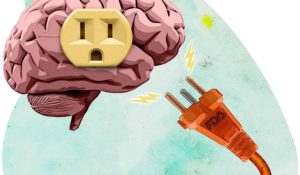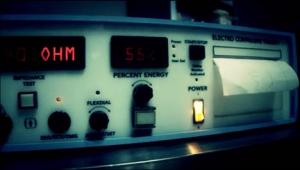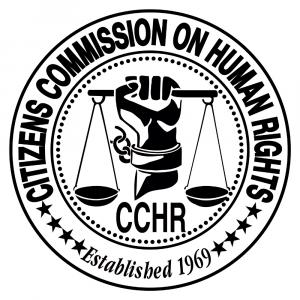March is Brain Injury Awareness Month: Human Rights Group Calls for the Banning of Brain-Damaging Electroshock

Brain injury can be caused by electric shock and seizures, and those are the key elements of electroshock, which is one of the two main physical treatments psychiatrists recommend for serious depression.

Psychiatrists still do not know how electroshock is supposed to “work,” how much voltage it will take to produce a seizure in a patient, or how many sessions to administer. It is a matter of trial and error with human lives.
Brain injuries can be caused by electric shock and seizures, two key elements of electroshock, a psychiatric procedure that has never been proven effective.
Brain injury can also be caused by electric shock and seizures, and those are the key elements of electroconvulsive therapy (ECT), or electroshock, which is one of the two main physical treatments psychiatrists recommend for serious depression.
Nobody really knows how many Americans get electroshocked each year because only four states require facilities administering ECT to report statistics to the state. A widely used, but outdated estimate of 100,000 appears to come from a 1995 study.
The Citizens Commission on Human Rights (CCHR) International recently requested data from states on ECT procedures billed to Medicaid, and of the 27 states that responded, six states indicated that ECT had been given to 6- to 12-year-olds, with four of those states reporting electroshock had been performed on children 5 years of age and younger.
CCHR has long called for the banning of ECT as a brutal procedure that has never been proven effective for any condition for which it is used and subjects patients to brain injury and the significant risk of other physical and psychological damage.
According to the U.S. Food and Drug Administration (FDA), electroshock can cause brain damage, cognitive impairment, permanent memory loss, prolonged or persistent seizures, worsening psychiatric symptoms, cardiovascular complications (including heart attacks), breathing complications and death.
Even psychiatrist Max Fink, considered “the grandfather of American ECT,” admitted: “The principal complications of ECT are death, brain damage, memory impairment and spontaneous seizures.”
ECT shoots up to 460 volts of electricity through brain tissue to induce a grand mal seizure that can last up to 30 minutes. A grand mal seizure is the most serious type of seizure, the kind usually caused by epilepsy. Emergency room doctors treat a grand mal seizure as a medical emergency. Psychiatrists performing the procedure call it “therapy.”
To put 460 volts in perspective, that’s 430 times the electric current of a stun gun and 2,300 times the volts that the brain uses to function. A human brain is normally powered by just 0.2 of a volt of electricity, which is eight times less electricity than a watch battery.
Psychiatrists still do not know how ECT is supposed to “work,” how much voltage it will take to produce a seizure in a patient, or how many sessions of ECT to administer. It is a matter of trial and error with human lives.
An initial series of electroshocks, followed by later sessions for what psychiatrists call “maintenance,” bring the average course of “treatment” today to about 35 sessions a year. Psychiatrists may recommend “maintenance” sessions for the rest of the patients’ lives.
In criticizing electroshock, the late Thomas Szasz, M.D., professor of psychiatry, humanitarian and co-founder of CCHR, considered by many academics as modern psychiatry’s most authoritative critic, wrote in Coercion as Cure: A Critical History of Psychiatry that “most neurologists regard it as self-evident that epileptic [grand mal] seizures cause brain damage and that all injury to an intact brain is harmful.”
For all the brain damage and risk of other injury from electroshock, the procedure has never even been proven effective in clinical trials.
John Read, Ph.D., a professor of psychology, Irving Kirsch, Ph.D., associate director of the Program in Placebo Studies at Harvard Medical School, and psychologist Laura McGrath, Ph.D., reviewed ECT studies and published their findings in 2020 in Ethical Human Psychology and Psychiatry.
“There is no evidence that ECT is effective for its target demographic – older women, or its target diagnostic group – severely depressed people, or for suicidal people, people who have unsuccessfully tried other treatments first, involuntary patients, or adolescents,” they concluded.
Read summarized this lack of proof of efficacy, stating there have only been 11 placebo-controlled studies of ECT: four found short-term benefit to some patients, five found no difference at the end of treatment between those who received ECT and those who did not, and two had mixed results, including one where psychiatrists reported a benefit, but nurses and patients did not. However, all of the studies had very small sample sizes and serious flaws in methodology, according to Read. He found that even the short-term benefit reported by some patients was not due to the ECT, but was primarily a placebo effect.
Most importantly, none of these studies found any lasting benefit to patients after a course of electroshock.
“No studies have found any evidence that ECT is better than placebo beyond the end of treatment,” Read states. He notes that the FDA requires ECT machines to have signs next to them stating: “The long-term safety and effectiveness of ECT treatment has not been demonstrated.”
In addition to the lack of evidence of ECT efficacy in treating depression, there is no evidence it prevents suicide. In fact, there is evidence electroshock increases the risk of suicide.
“Numerous studies have found ECT recipients are more likely than other patients to kill themselves,” according to Read and Joanna Moncrieff, a professor of psychiatry, writing in Psychological Medicine after conducting a review of evidence.
One of those studies found 1,524 homeless U.S. veterans who received ECT made significantly more suicide attempts during the year following electroshock than 3,025 homeless vets who did not receive the procedure.
Worse still, there is not even proof of any brain disorder that administering electroshock could possibly cure. “The various biological deficits that are supposedly corrected by ECT have never been demonstrated,” wrote Read and Moncrieff.
Craig Newnes, a psychologist and author of A Critical A-Z of Electroshock, interviewed in the CCHR documentary, Therapy or Torture: The Truth about Electroshock, says, “The biggest mystery of all is why on earth people think that putting bolts of electricity through people’s heads is a good idea.”
Psychiatrists performing electroshock make twice the income on average of those who don’t. It’s estimated that a psychiatrist spending just a few hours a week to do 20 ECT procedures can bring in an additional $300,000 per year. Electroshock is lucrative, raking in more than $5 billion a year in the U.S. alone.
CCHR advocates a total ban on ECT and continues to raise public awareness about the brain damage it causes. More than 126,000 people have signed the CCHR online petition to ban ECT.
If you or someone you know has been harmed by electroshock, you are encouraged to report it to CCHR at www.truthaboutect.org.
The Citizens Commission on Human Rights was co-founded in 1969 by members of the Church of Scientology and Dr. Szasz to investigate and eradicate psychiatric abuse and restore human rights and dignity to the field of mental health. Since then, CCHR has helped obtain more than 228 laws that protect mental health patients.
The CCHR National Affairs Office in Washington, DC, has advocated for mental health rights at the state and federal level. The CCHR traveling exhibit, which has toured 441 major cities worldwide and educated over 800,000 people on the history up to the present day of abusive psychiatric practices, has been displayed in Washington, DC, at the Congressional Black Caucus Foundation Annual Legislative Conference and other locations.
Anne Goedeke
Citizens Commission on Human Rights, National Affairs Office
+1 202-349-9267
email us here
Visit us on social media:
Facebook
Therapy or Torture – The Truth About Electroshock Preview – YouTube
Legal Disclaimer:
EIN Presswire provides this news content "as is" without warranty of any kind. We do not accept any responsibility or liability for the accuracy, content, images, videos, licenses, completeness, legality, or reliability of the information contained in this article. If you have any complaints or copyright issues related to this article, kindly contact the author above.


